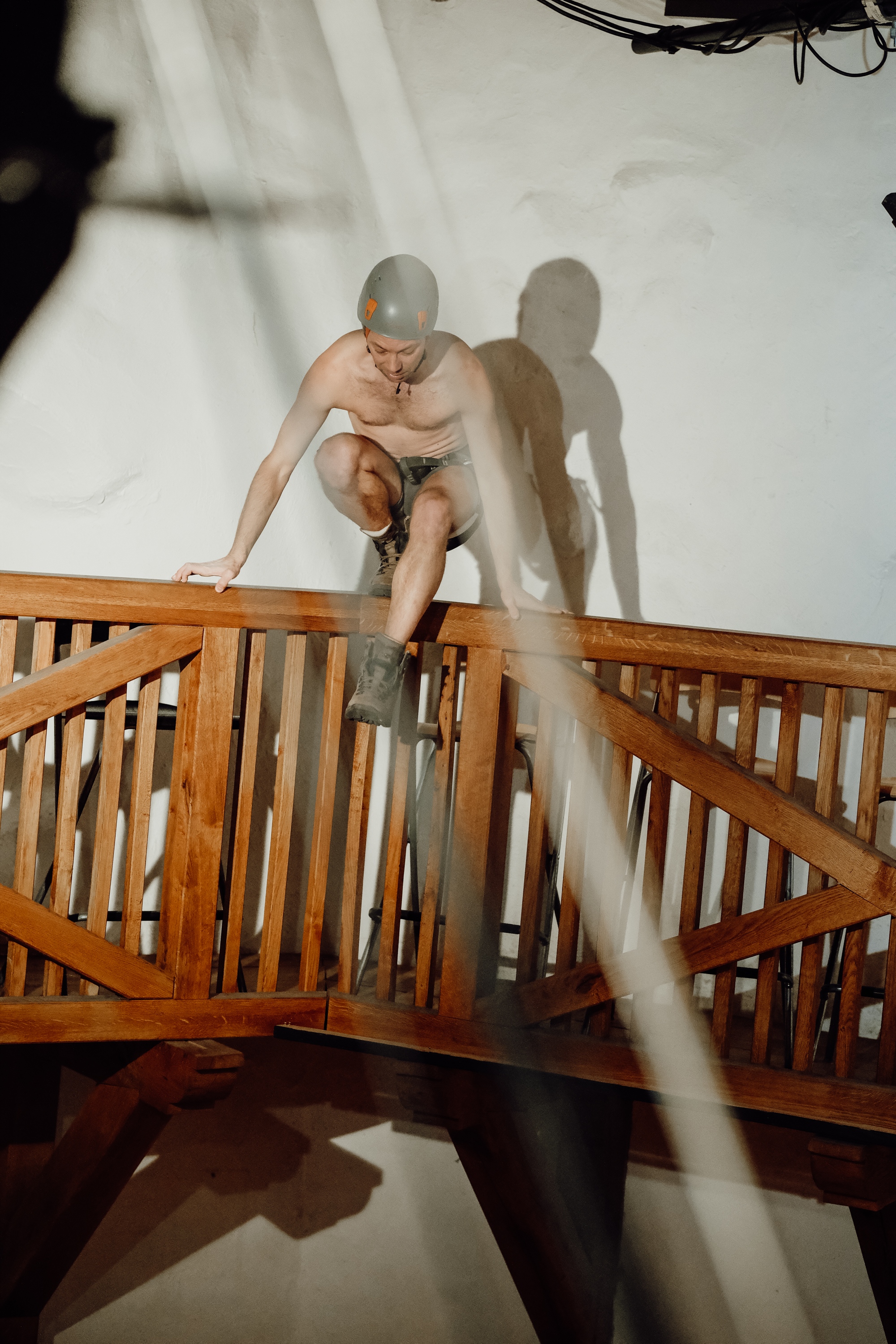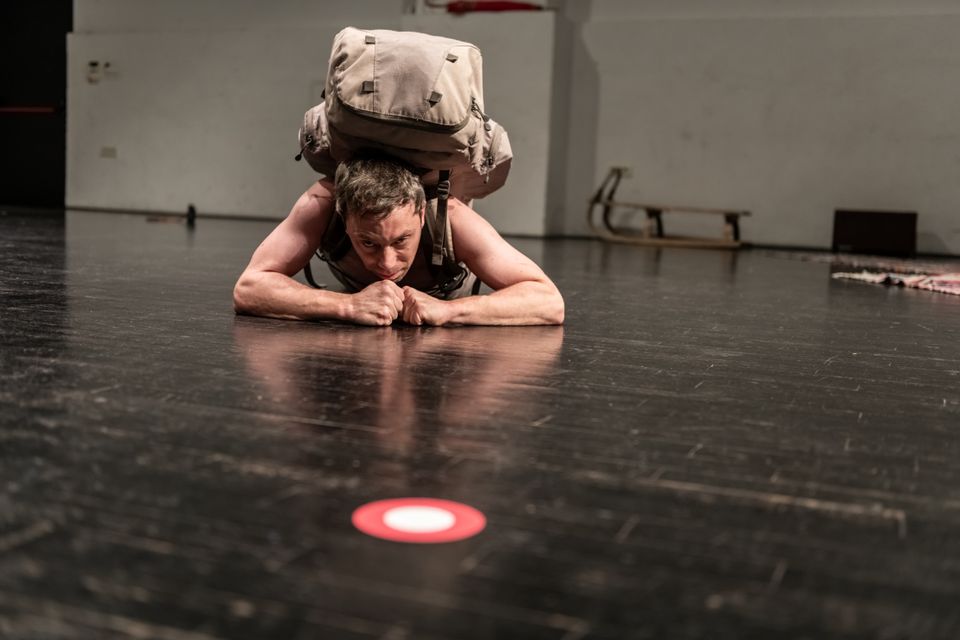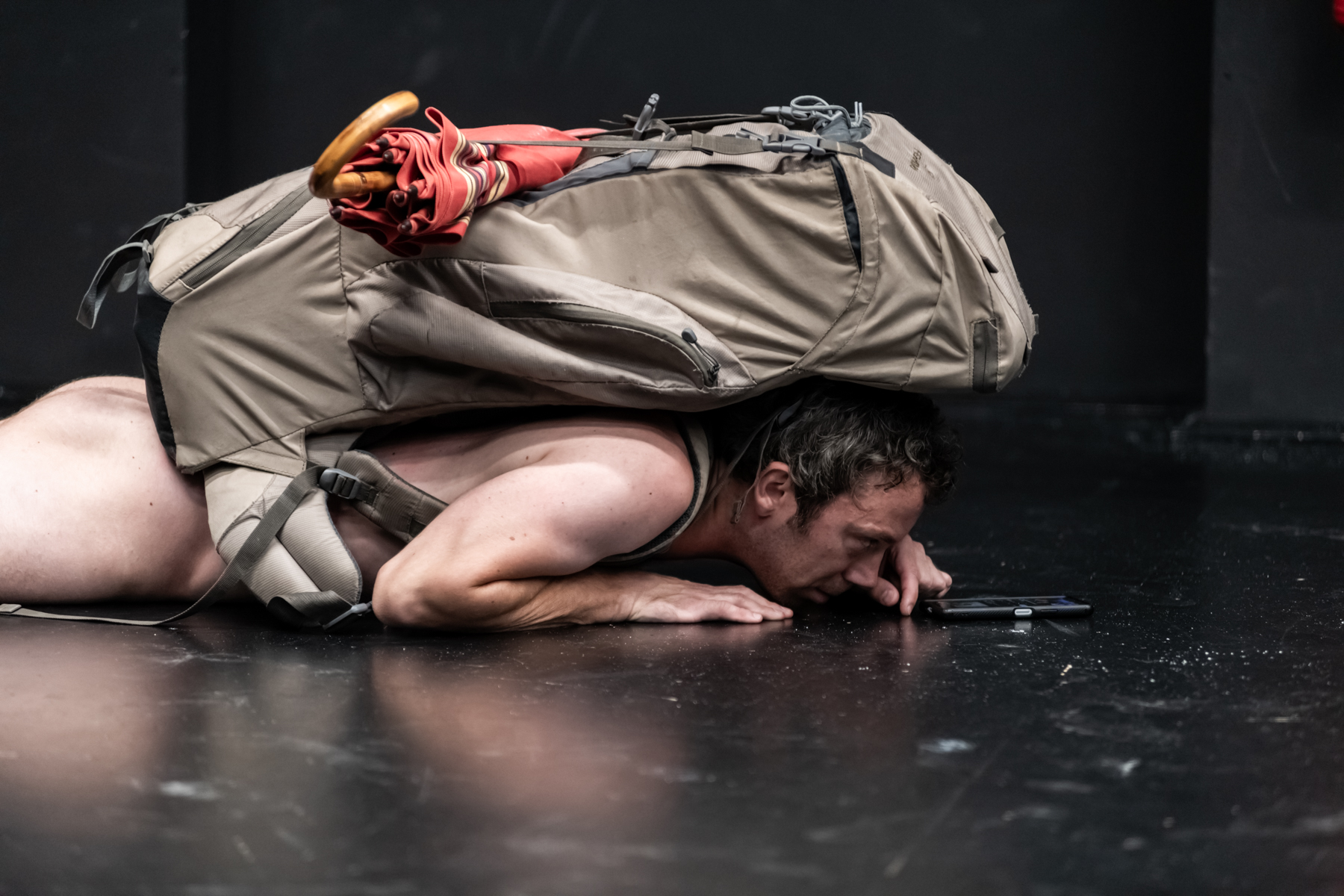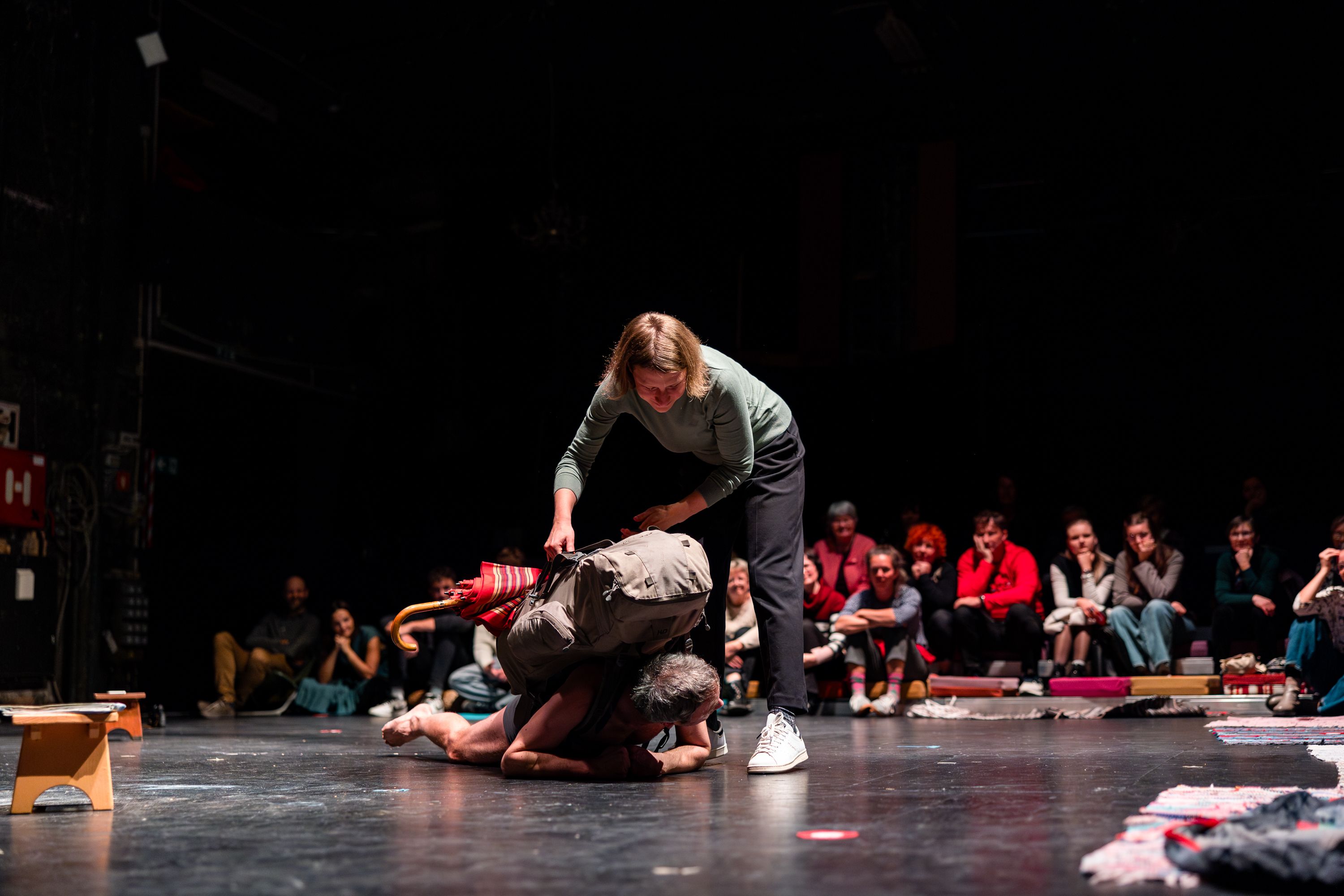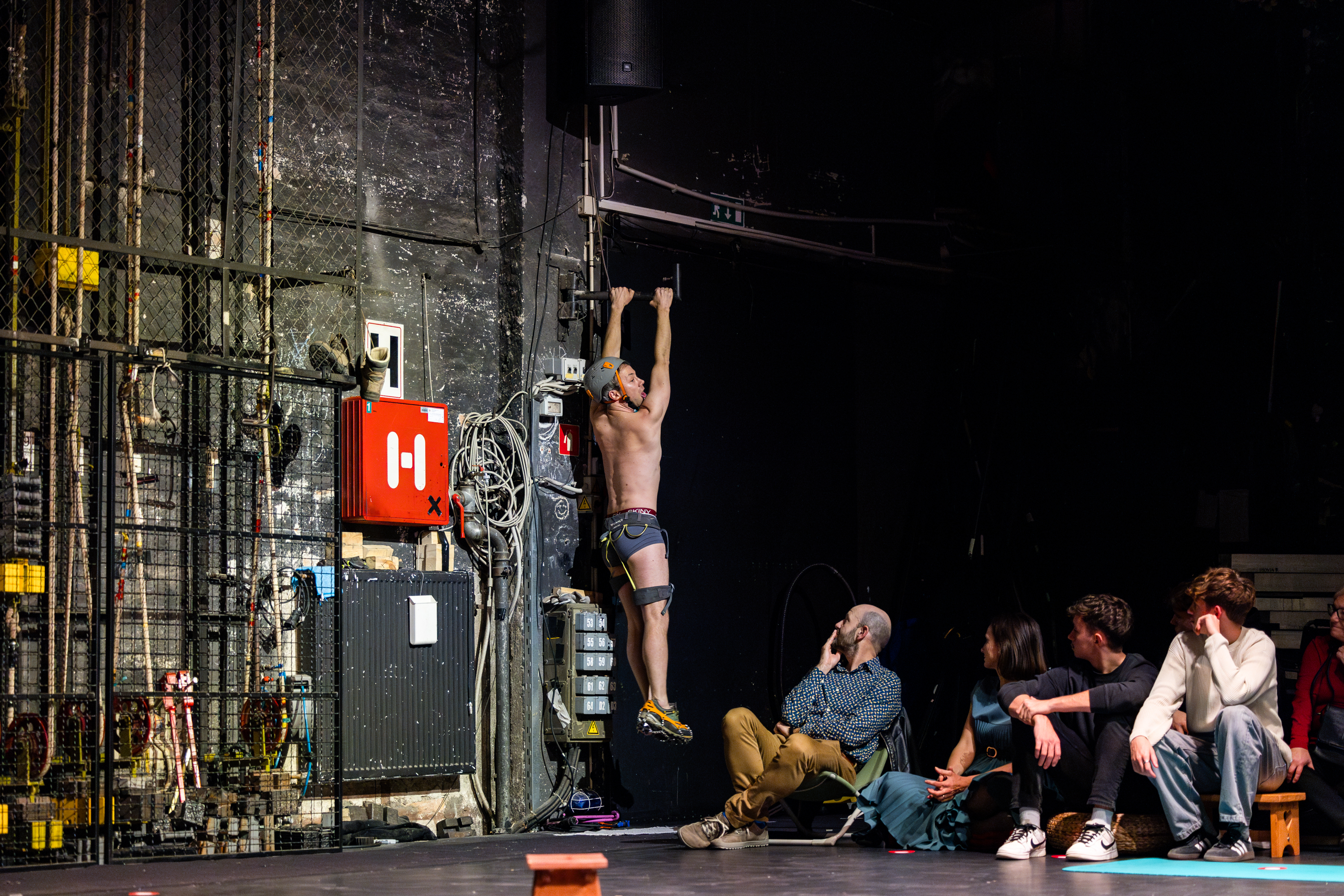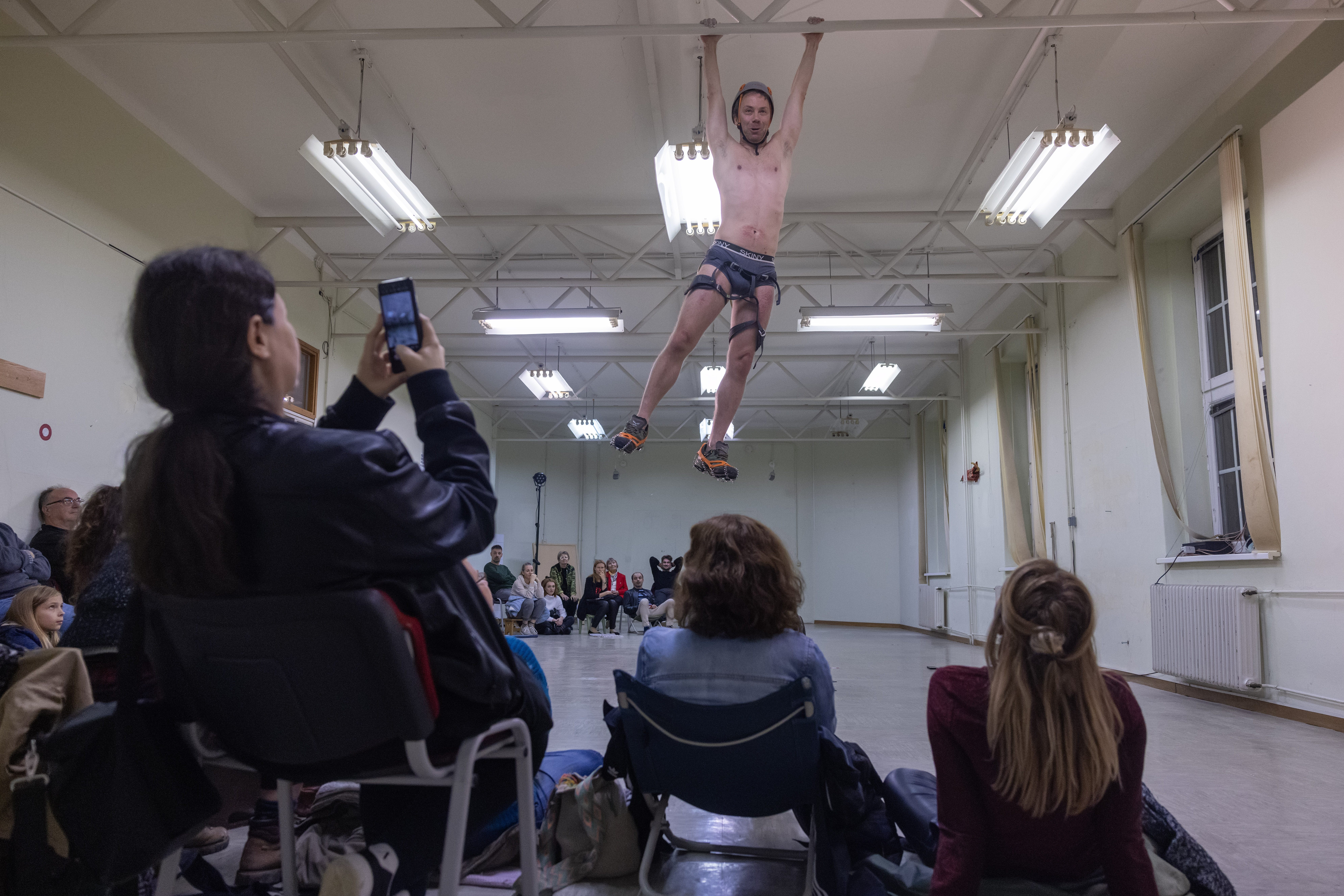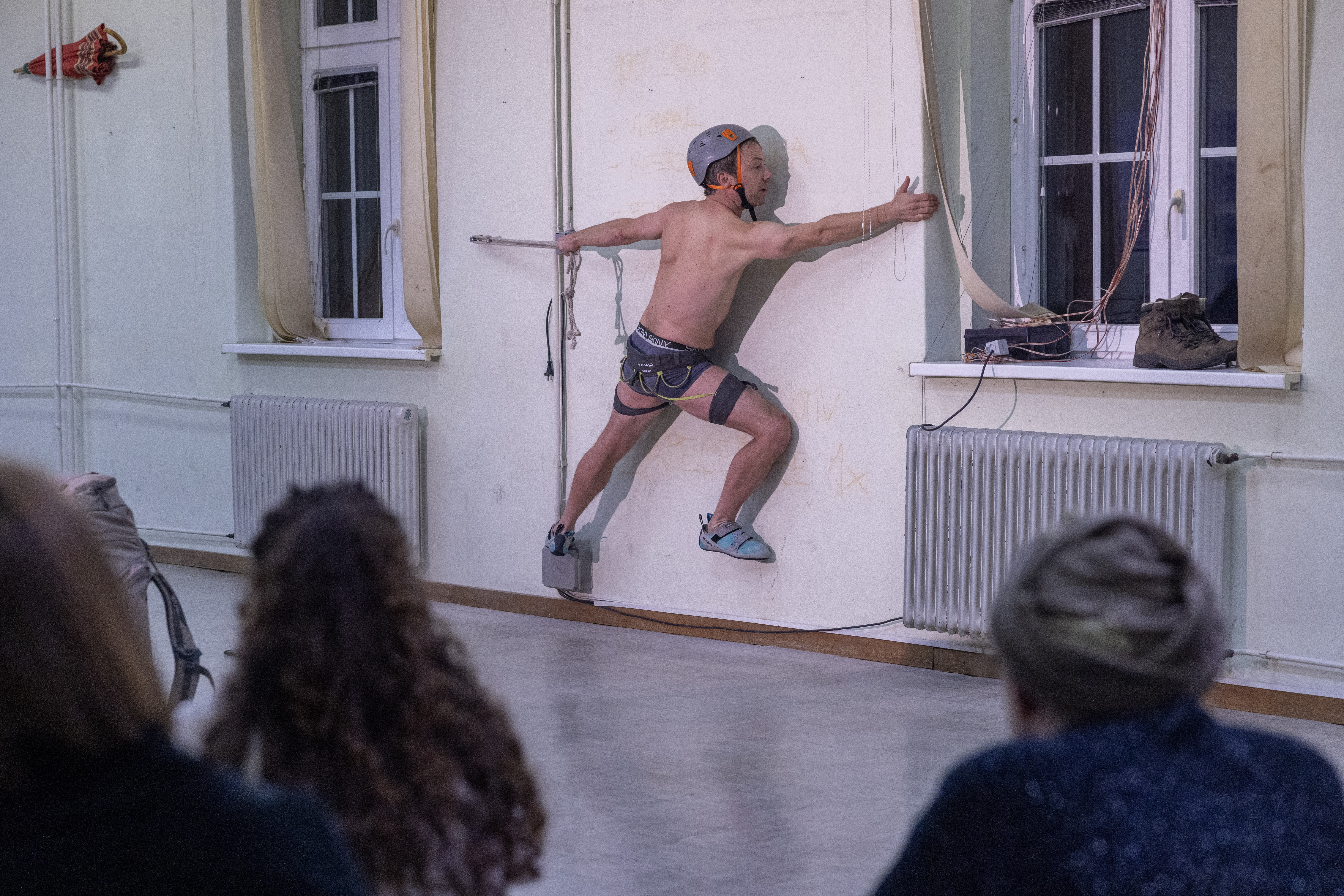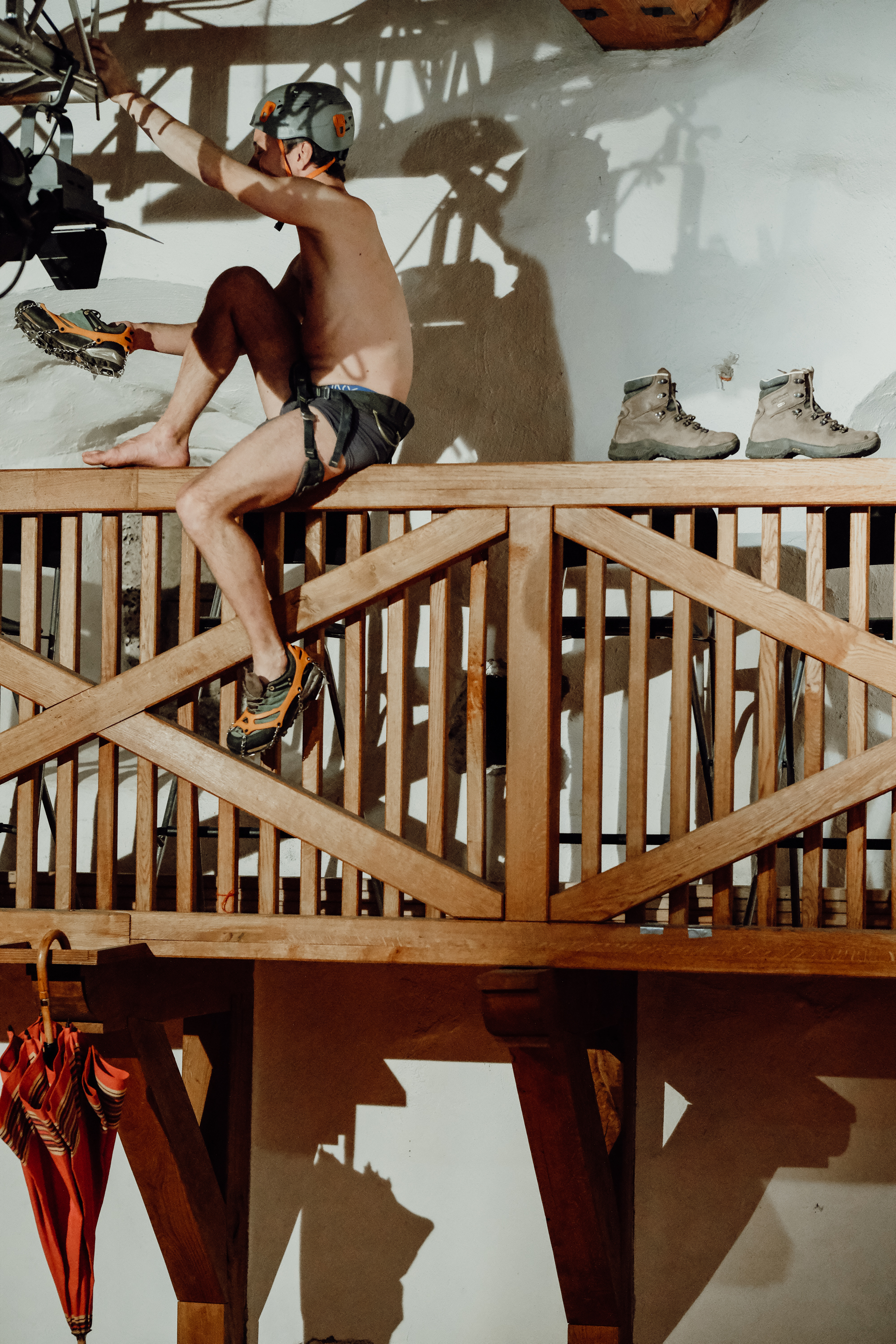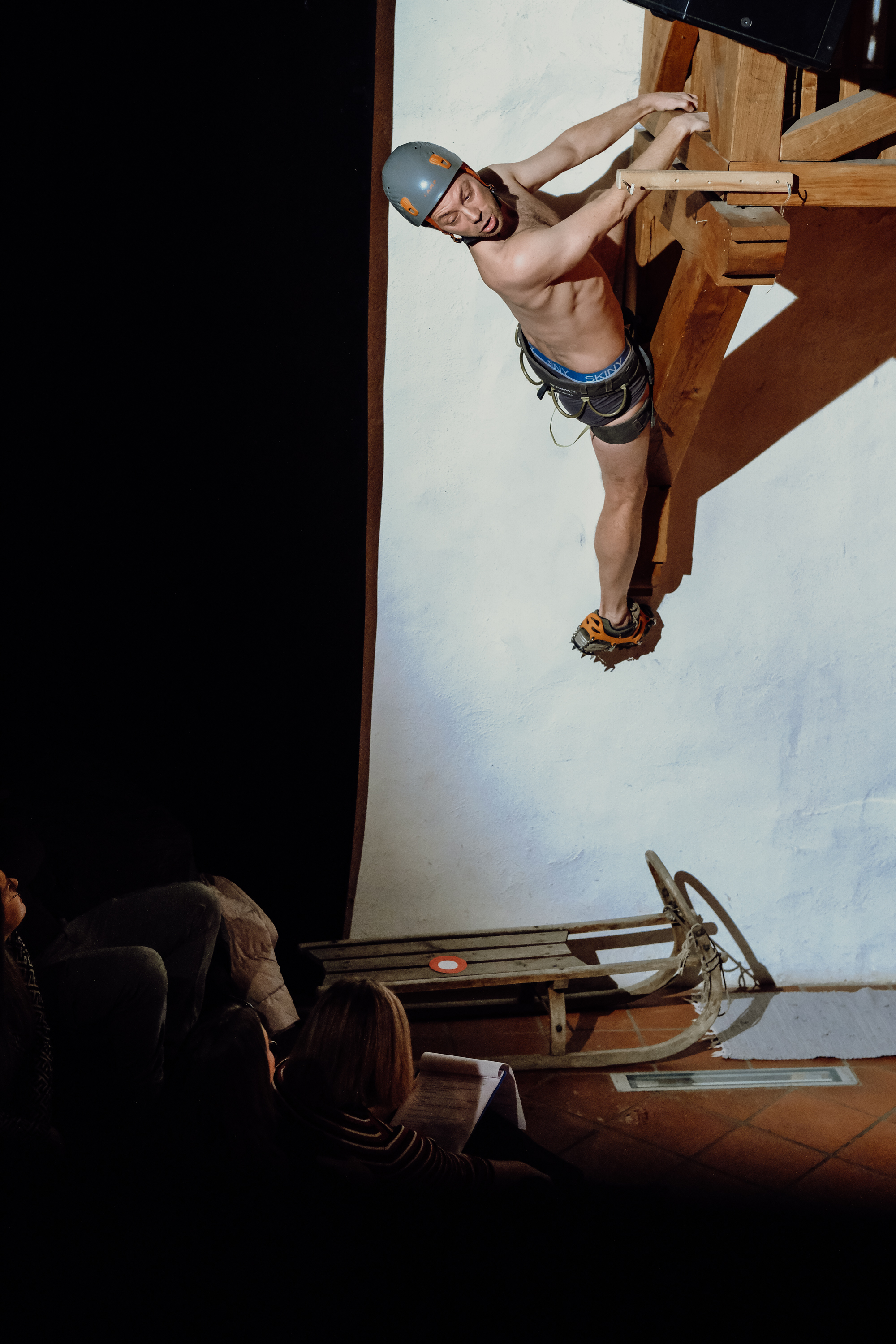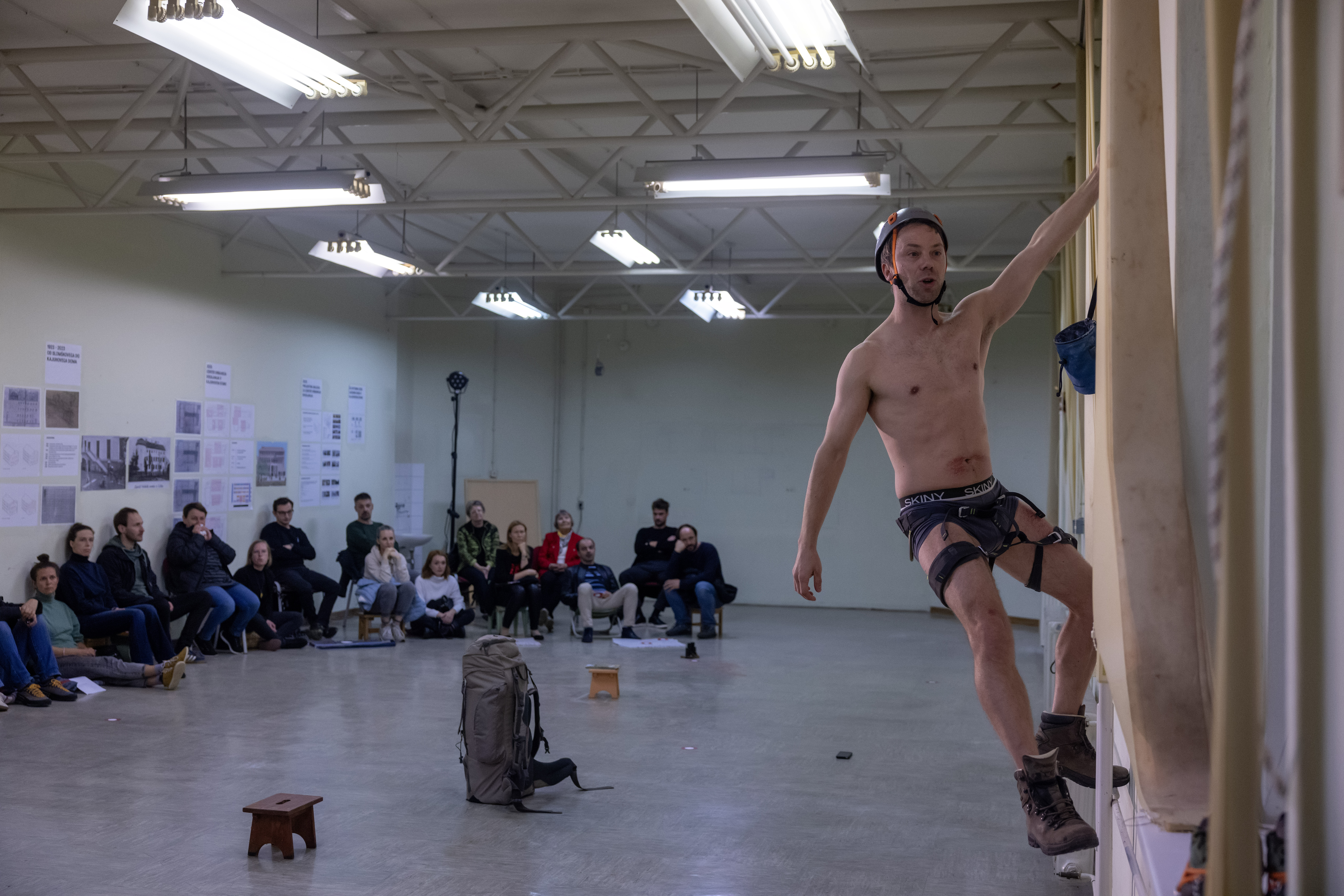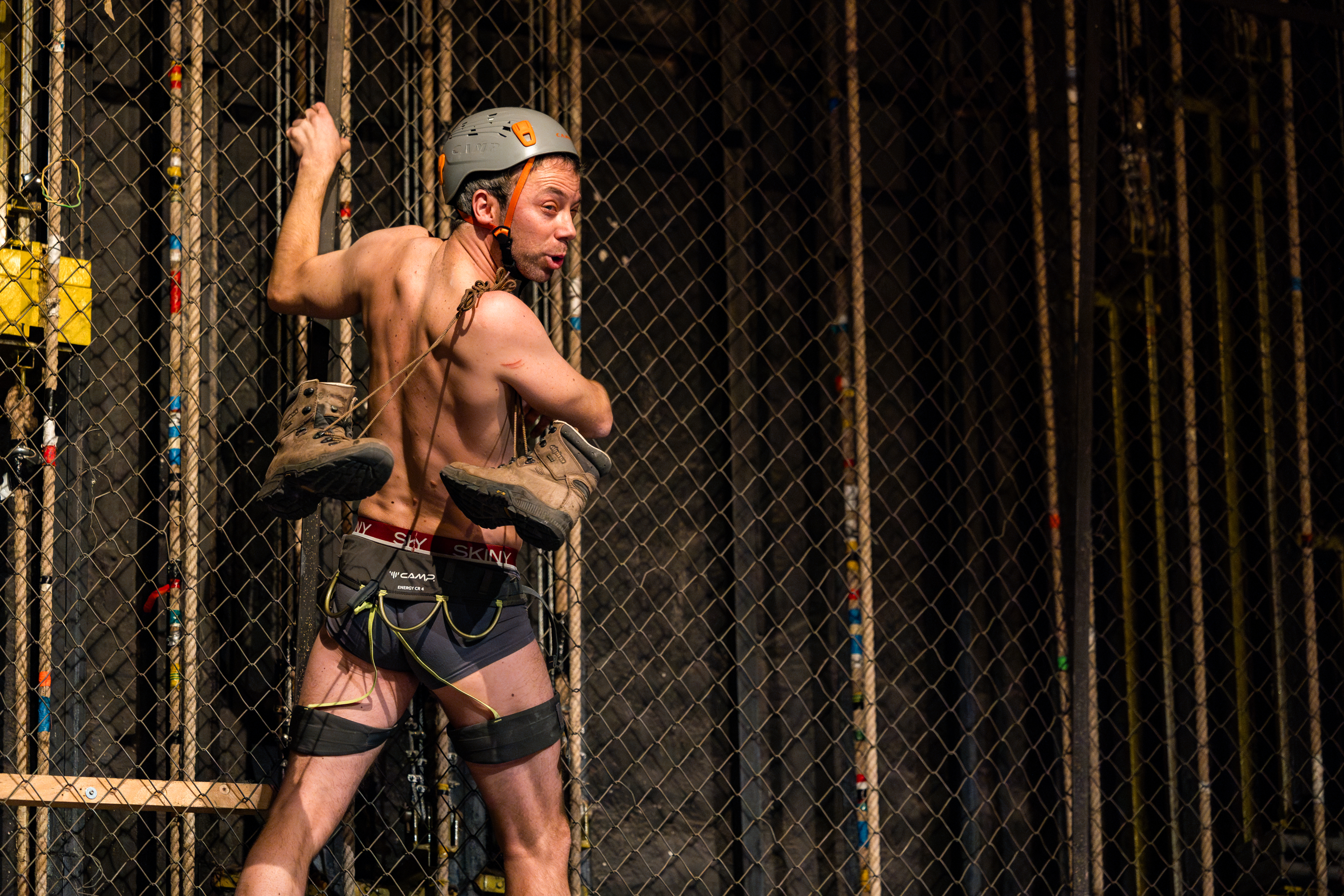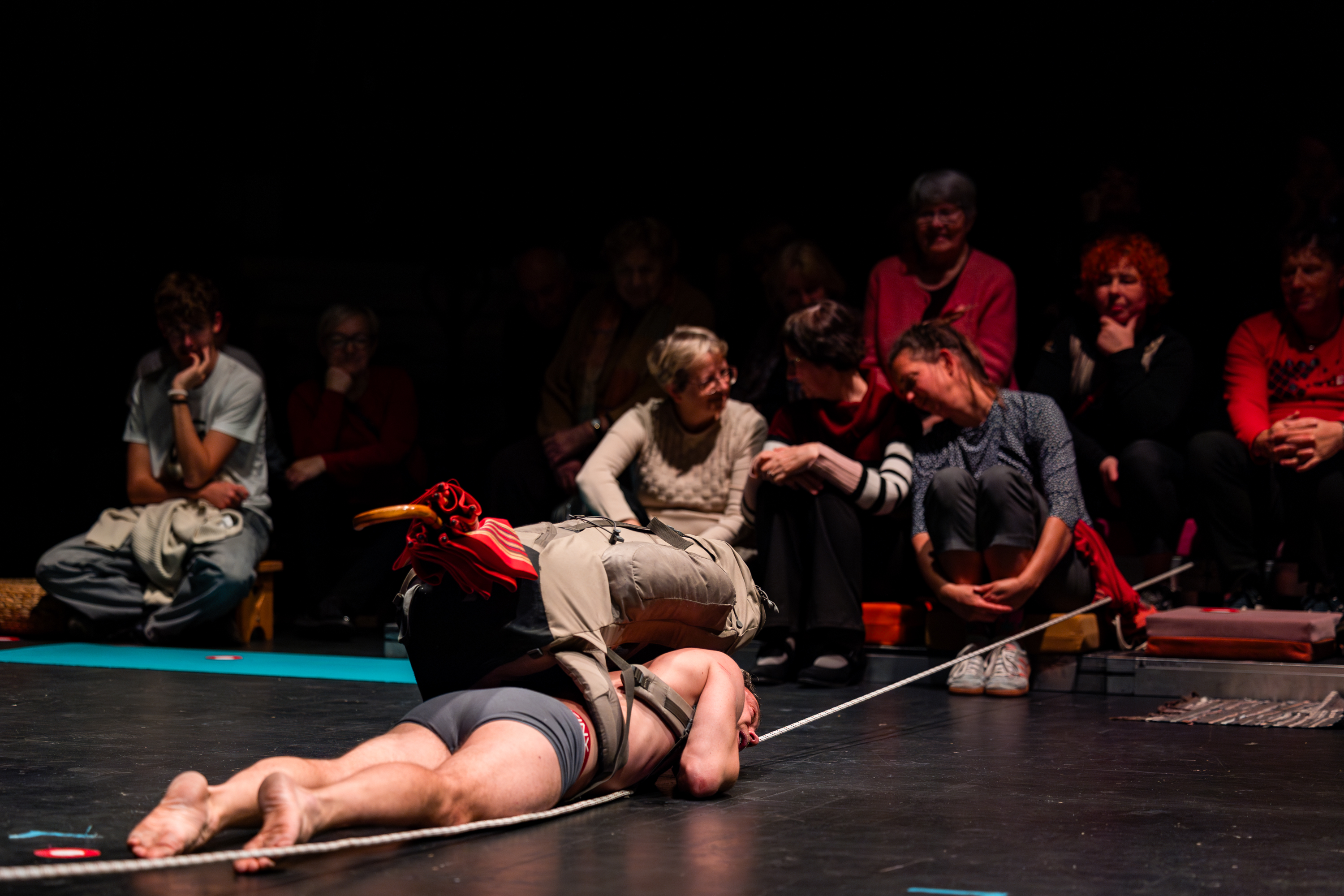Regaining a sense of belonging
Rok Kravanja: Slovenska transverzala
A performance created with the idea of the Slovenian Mountain Trail in mind
Dear Slovenia,I recently turned forty and want to thank you for the clean air I breathe, the stunning views, unspoiled nature, and public healthcare that supports my adventures in your mountains. Thank you for free education – I completed two studies. Thank you for giving me a voice in Europe – I’ll proudly vote in the upcoming elections. I’ll celebrate your EU membership anniversary at a village fest with Oberkrainer music, which I always used to roll my eyes at. Your son, Rok Kravanja
Slovenia
National
It addresses urban-rural linkages
It refers to other types of transformations (soft investment)
Yes
2024-05-28
No
No
No
As an individual
The Slovenian mountain trail is a performance that blends Slovenia’s mountain heritage with the performer’s personal story, exploring individual and collective identity, and cultural values shaped by Slovenia’s natural landscape. The project intertwines tradition with modernity, using contemporary art to highlight narratives from collective memory that are often overlooked in urban environments. It creates a space for reflection on how deeply rooted traditions maintain relevance today. The key objective is to connect sport and art in rural areas such as mountains, huts, and waystations, which are integral to Slovenian cultural heritage. This approach makes contemporary art more accessible to smaller communities outside urban centers, where it is less available. Using a mobile format with minimal equipment, it reaches remote locations, offering an inclusive cultural experience. Through the integration of traditional values, culture, and contemporary art, the Slovenian mountain trail subtly addresses important social themes such as gender equality, diversity, and inclusion. These themes are explored within the broader context of culture and nature, creating an art experience that is both reflective and transformative. The performance invites audiences to question societal norms while connecting with Slovenia’s landscape and collective memory. The project exemplifies how art and culture transcend boundaries, combining sport, tradition, and contemporary themes in an inclusive way. Bringing art to rural environments encourages wider participation and fosters a deeper connection with local heritage. This demonstrates how contemporary art can engage diverse audiences while preserving and celebrating cultural values. Additionally, the performance creates a platform for local communities to engage in dialogue about their cultural practices and share stories, fostering greater cultural exchange and mutual understanding.
performance
tradition
modern
mountains
accessibility
The project’s sustainability goals focus on environmental, social, and cultural aspects. By using a mobile format with minimal gear, it reduces environmental impact and adapts easily to rural areas, avoiding the need for large infrastructure. Natural materials, such as wood and logs, reflect the beauty of forests and landscapes, while the simple set and costumes enhance the connection to nature. Everything fits into a single backpack, symbolizing the transport of cultural heritage. This minimalist approach as metaphor for carrying our shared history. Socially, the project ensures art reaches rural communities, often lacking access to contemporary art, and fosters local engagement. It encourages dialogue about identity, culture, and environmental awareness, deepening the collective understanding of sustainability and heritage. Culturally, it blends local traditions with contemporary themes, creating a space for reflection on how cultural practices evolve while staying relevant. The performance challenges the audience to reconsider their relationship with the land and community, promoting long-term sustainability. The project is highly mobile and cost-effective, with all equipment fitting into my car, allowing easy travel between locations. This approach highlights its self-sufficiency and efficiency. The performance uses art as a tool for bringing people together, making it a unique and impactful experience. It shows how contemporary art can transcend boundaries, especially in rural areas, where such opportunities are limited. By traveling to different locations, the project fosters connections between communities and promotes understanding. Through its minimalism and focus on nature, the performance emphasizes the importance of environmental consciousness in everyday life. By combining environmental responsibility, social inclusion, and cultural preservation, the performance demonstrates how contemporary art can contribute to sustainable future.
Focusing on aesthetics and the quality of experience, the project aims to create an immersive and participatory encounter that connects audiences with Slovenian cultural heritage and natural landscapes. By bringing performances to local centers beyond urban areas, it broadens access to art, reaching communities that rarely experience such events. This approach enriches the audience’s engagement, making the experience inclusive and meaningful. The performance’s simplicity in structure and execution ensures accessibility, particularly for rural audiences less familiar with contemporary performance art. A minimalist aesthetic and refined design invite deeper connections with heritage, nature, and community. Through its collective themes, the project fosters identification, resonating universally while remaining rooted in local culture. It explores identity, belonging, and truth, offering a reflective space for broader audiences. Familiar hiking tools such as walking sticks and backpacks integrate the performance into Slovenian cultural context, while the distinctive "parazol" umbrella adds a recognizable visual element. Using natural materials like wood and logs, the project highlights Slovenia’s rural beauty, maintaining a minimalistic and unpretentious character. Tradition and modernity merge through simple yet evocative visuals that reinforce a sense of place and identity. This interplay between past and present ensures relevance across generations. The project demonstrates how art can be immersive, participatory, and impactful, bridging local heritage with contemporary themes. It deepens cultural understanding and strengthens personal connections through artistic engagement. The performance invites reflection on identity, heritage, and shared experiences, turning familiar landscapes into sites of artistic discovery and meaning.
The project aims to gradually move from larger urban centers, where it has been staged (Ljubljana, Maribor), to other cities (Kranj, Celje) and smaller towns, where it will continue to perform. The performances have been accessible to vulnerable groups and, in most cases, free or with very low entrance fees as a symbolic contribution. By reaching various locations, including high schools, the project fosters engagement in local communities and rural areas, where cultural centers and mountain huts can host the performance. While the form is contemporary, it resonates with audiences through familiar themes like hiking. This creates a natural bond with mountain huts and waystations, allowing the performance to reach audiences who might never visit a theater. The cultural offering extends to tourism, drawing international visitors who hike the Slovenian mountain trail. The project’s minimalist and mobile format ensures accessibility, requiring only essential props and materials that fit into a single backpack. This allows seamless travel between locations while symbolizing the idea of carrying one’s heritage. The performance integrates recognizable materials and natural elements such as firewood, reflecting Slovenia’s forests and traditions. Audience participation is key, as they actively shape the experience, forming a temporary community. By involving local groups, the project embraces inclusive governance, allowing diverse voices to shape the cultural dialogue. It sets an example of how art can democratize culture, bridging geographical and social divides while promoting sustainability. Through its commitment to inclusivity, the project strengthens the connection between culture, nature, and community, offering an accessible and transformative experience. This approach fosters local empowerment and preserves Slovenian cultural values, making the performance adaptable to different environments while ensuring affordability and engagement for all.
The performance Slovenian mountain trail benefits citizens on multiple levels. It merges tradition with contemporary performance, integrating traditional elements without exclusion. Audiences strongly identify with hiking culture and heritage symbols, fostering a shared recognition of cultural identity. Rather than exclusion, the performance promotes inclusion by bridging sports, culture, and art. Accessibility is central to the project. Most performances are free or low-cost, ensuring economic barriers do not limit participation. Additionally, Slovenian Mountain Trail moves beyond urban centers, bringing contemporary performance to smaller towns, villages, and mountain huts. This directly benefits local communities with limited access to such cultural events, making contemporary art available to diverse age groups. As the Slovenian Mountain Trail is nationally recognized, the project also wish to extend beyond national borders. Some performances take place in mountain huts, allowing foreign hikers and tourists to experience Slovenian contemporary performance in an unexpected yet meaningful setting. This enhances cultural tourism, as local hospitality providers can offer this unique artistic encounter. The performance transforms a traditional mountain lodge into a space for contemporary expression, reaching audiences who might not actively seek cultural events. Additionally, the performance is deeply participatory—spectators engage directly and become part of the experience. This fosters a sense of temporary community, reinforcing inclusion and shared experience. By involving audiences physically and emotionally, Slovenian Mountain Trail strengthens connections between people and place. It serves as both an artistic intervention and a model for cultural accessibility, demonstrating how performance can unite tradition, physical endurance, and artistic exploration in a collective space.
Strategically engaging stakeholders across multiple levels, the Slovenian Mountain Trail project ensures a broad and sustainable impact. At the local level, collaboration with mountain hut operators, hiking associations, and cultural organizations is central, providing venues, promoting the project, and facilitating community engagement. This partnership makes culture accessible to diverse audiences in remote areas, ensuring that contemporary performance reaches all corners. Supporting logistical coordination and integrating the project within local tourism strategies, municipal cultural boards and tourism offices amplify visibility at the regional level. Nationally, partnerships with cultural institutions and performing arts networks reinforce Slovenia’s cultural identity and maintain artistic rigor, connecting contemporary performance with traditional elements. On the European stage, the project contributes to the broader discourse on cultural sustainability, mobility, and accessibility, collaborating with European hiking networks and arts festivals. These connections foster international dialogue, expanding the project’s reach and positioning it as a catalyst for cross-border cultural exchange. Through this multi-level involvement, the project guarantees inclusivity, allowing contemporary art to reach diverse regions and demographics. By taking performances to smaller towns, villages, and mountain huts, cultural accessibility is ensured for communities with limited exposure to contemporary art, offering them creative experiences. Inviting audiences to engage physically and emotionally, the participatory nature fosters collective identity and social cohesion. Merging tradition with modern artistic practices, the Slovenian Mountain Trail creates an immersive cultural experience that resonates across borders and communities, promoting a deeper understanding of shared heritage, local traditions, and global artistic dialogue.
Blending physical activities, storytelling, and performance art into a cohesive, interactive experience, Slovenian Mountain Trail redefines how art engages with the environment. By transcending traditional boundaries, it combines sports like climbing and hiking with artistic elements such as movement, drama, and narrative, forming a unique hybrid. The performance becomes an open-form, participatory event, inviting audience interaction and showcasing the fusion of sports, storytelling, and artistic expression. Collaboration among experts from various fields was essential, as climbing and hiking professionals contributed their knowledge of Slovenian mountain trail and mountaineering practices. Artists, on the other hand, infused these traditions with elements of contemporary performance. Cultural heritage specialists ensured the performance’s authenticity, connecting it to Slovenia’s rich mountain culture. Additionally, tourism professionals worked to align the project with regional strategies, ensuring its accessibility for both local communities and international visitors. Environmental sustainability was central, with ecologists advising on minimizing the ecological footprint of performances in pristine, remote environments. This interdisciplinary nature fostered dialogue between the natural environment, the arts, and local traditions, creating a platform for knowledge exchange that extended beyond the performance itself. Bridging contemporary art with the natural landscape, this approach ensured a harmonious interaction between culture, nature, and community. Reflecting the interconnectedness of different fields, the result is a multifaceted cultural experience. Movement, storytelling, and performance seamlessly integrated into the landscape, offering a truly unique artistic experience that challenges audience perspectives and encourages them to engage with the environment and art in ways that foster a deeper connection to the world around them.
By merging site-specific movement with extreme physical adaptation, this project redefines performative space. Instead of fixed stage designs, it incorporates the natural and architectural elements of mountain huts, trails, and shelters, transforming them into active components of the performance. The vertical and horizontal dimensions of each space shape the movement vocabulary, making every performance distinct. Rather than relying on a predetermined stage, the performer engages with gravity, elevation, and terrain, continuously shifting between climbing, crawling, descending, and traversing surfaces. The backpack serves both as a functional object and a performative device, reinforcing themes of endurance, adaptation, and transition. A central innovation lies in the interaction between performance and environment, where movement through space is not just a choreographic decision but a necessity dictated by the landscape. This approach shifts the focus from theatrical illusion to real-time negotiation with the surroundings. Unlike conventional theater, where audiences remain passive, here spectators engage actively, following the performance as it unfolds. Their perspectives are constantly challenged—they must move, shift viewpoints, or physically reposition themselves to track the action. This direct involvement fosters a collective experience, transforming spectatorship into an act of presence and engagement. By fusing elements of mountaineering, climbing, endurance, storytelling, physical theater, and performance art, the project creates a hybrid form that challenges disciplinary boundaries. Rejecting traditional venues in favor of unpredictable, natural settings expands the concept of performative space, democratizing access to contemporary performance and bringing it to audiences in remote and unconventional locations. The constant negotiation between the body, environment, and audience blurs the line between performer and observer.
The project follows a detailed, three-phase methodology that merges artistic research, performance experimentation, and fieldwork. The initial phase took place at VN Lab (Via Negativa Lab), focusing on gathering material through guided reflection, improvisation, and collaborative research. VN Lab nurtures experimental performance practices, offering a space for participants to push creative limits and generate raw material through collective exploration. The second phase unfolded at PARL (Performance Art Research Ljubljana), a platform for contemporary performance research. During a ten-day residency, the collected material was curated and refined through dramaturgical and conceptual support, fostering interdisciplinary exchange. The selection process allowed for critical evaluation, shaping the material into a coherent conceptual framework. The third phase involved working with two dramaturges to structure the performance. This process integrated textual, physical, and conceptual elements, ensuring the material evolved through rehearsal-based exploration and embodiment. The aim was to create a dynamic performance that resonates with both performers and audiences. Parallel to the artistic work, field research along the Slovenian Mountain Trail was carried out, focusing on Slovenian cultural heritage. This involved collecting narratives, local traditions, and environmental observations from mountain huts and alpine landscapes. The research provided valuable insights into Slovenian history, folk traditions, and nature, which were incorporated into the performance. This parallel research added depth to the project, providing real-world references that enhanced the connection to Slovenian culture and landscape. The integrated methodology ensured a comprehensive, dynamic creative process that combined artistic exploration with cultural context, enriching both the artistic depth and relevance of the work.
Slovenian Mountain Trail, the oldest and longest hiking route in Slovenia, shaped both the content and methodology of this project. Spanning over 600 kilometers, it provided a framework for exploring movement, endurance, and collective memory. The project’s methodology—combining artistic research, dramaturgical structuring, and fieldwork—is highly adaptable to other site-specific performances, participatory practices, and cultural heritage projects. A key element is using the trail as both a physical and dramaturgical structure. The diverse landscapes of the Slovenian Mountain Trail—from alpine peaks to karst terrain—mirror the shifting dynamics of the performance material. Gathering content directly from the trail through testimonies, historical research, and environmental observations is a method that can be applied to other geographical or cultural routes. Any historical or pilgrimage path could serve as a performative score, where movement through space informs artistic choices and dramaturgical sequencing. The project also engaged with mountain huts as cultural and social hubs. These shelters, run by generations of caretakers, hold personal and collective histories, which were integrated into the performance. Documenting stories of hikers, locals, and mountaineers created a performative archive reflecting the evolving relationships between humans and landscapes. This methodology could be applied in other regions where shelters or communal spaces function as repositories of oral history. Additionally, working with two dramaturges, the material evolved through site-specific rehearsals, where locations shaped bodily presence, rhythm, and environmental interaction. This flexible approach could be implemented in various landscapes, from urban parks to rural trails.The research component bridged archival materials and contemporary artistic expression, highlighting how performance can serve as a tool for cultural preservation.
The project addresses global challenges related to environmental sustainability, cultural preservation, and the social function of public spaces by offering locally grounded solutions. Climate change and the rapid transformation of landscapes threaten natural heritage and traditional ways of life. By working along the Slovenian Mountain Trail, the project engages directly with fragile ecosystems, raising awareness of their historical and contemporary significance. The integration of performance with field research highlights how artistic practices can foster environmental responsibility by encouraging embodied experiences of nature and its vulnerabilities. The project also responds to the erosion of intangible cultural heritage. Many traditions, oral histories, and communal practices tied to mountain life are disappearing due to modernization and changing social structures. By collecting and incorporating stories from mountain huts and hiking communities, the project provides a living archive that not only documents but reanimates these narratives within a contemporary artistic context. This model can be adapted elsewhere, reinforcing the importance of local storytelling in preserving cultural memory. Another critical challenge addressed is the diminishing role of non-urban public spaces as sites of gathering and exchange. In many places, urbanization has marginalized communal environments where informal knowledge transfer and collective identity formation occur. The project recognizes mountain huts as unique public spaces that maintain their function as gathering points for diverse individuals. By working with the interactions and rituals that emerge within them, it demonstrates how such spaces can be reimagined as active cultural hubs. This approach can be transferred to other locations where non-traditional public spaces play a role in sustaining social bonds. By connecting ecology and culture the project shows how local actions spark global sustainability talks.
Impact on the audience and direct interaction with viewers: The performance design blurs the line between the performer and audience, with viewers sitting directly on the stage, creating a more intimate connection. This direct interaction invites the audience to actively participate in the experience, allowing them to engage more deeply with the themes being presented. The audience's proximity fosters a heightened emotional response, making the performance more impactful. Exploration of Slovenian identity and critique of Slovenian mythology: Slovenian mountain trail transcends a mere physical journey, becoming an introspective exploration of Slovenian identity. By addressing questions of national mythology, the performance challenges stereotypes of Slovenian-ness, prompting the audience to reflect on what it means to belong to a nation. This critique encourages viewers to question traditional narratives and explore deeper, more complex understandings of identity. Interweaving physical experience with intellectual inquiry: The physical exertion of the performer, pushing personal limits, becomes a vehicle for exploring broader themes like perseverance, discipline, and self-awareness. The audience witnesses a raw, unfiltered display of human endurance, which serves to deepen their connection with themes such as suffering, self-discovery, and the human capacity to endure. Conceptual depth and avoidance of ideological clichés: The performance avoids direct ideological or political commentary, instead focusing on personal and universal themes. By not relying on political or nationalist rhetoric, it invites the audience to draw their own interpretations, making the work more accessible and relevant to a wide range of perspectives. Importance of repetitions and further performances: The ZIZ award for Best Performance in 2024 and subsequent repeat showings amplify the impact of the work.

